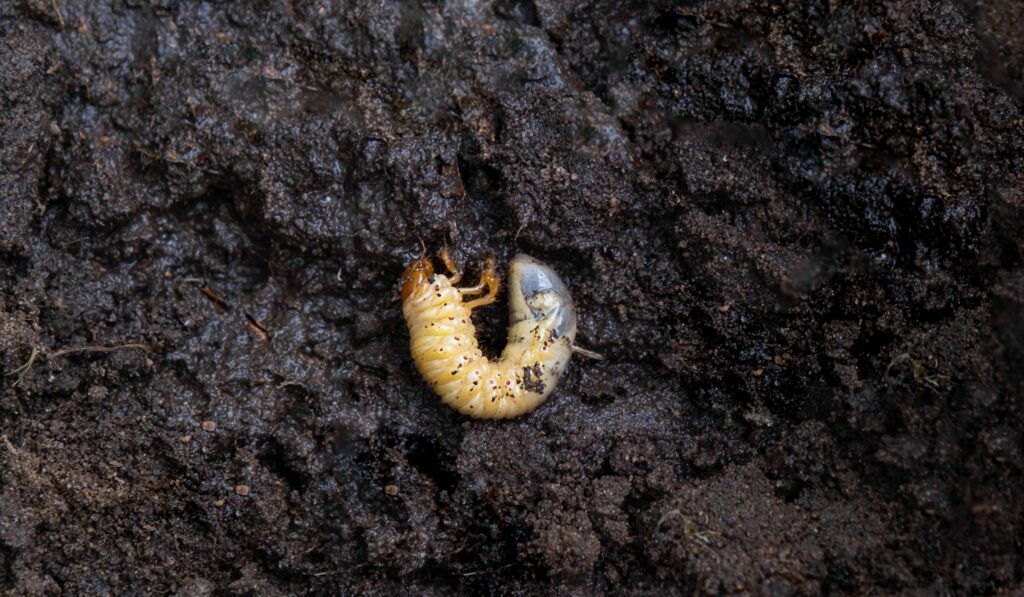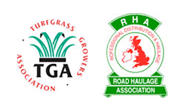Lawn Pests
Lawn Pests in Turf – Leatherjackets and Chafer Grubs

Lawn Pests – Background
Insect larvae or lawn pests can occasionally be found in the soil layer of freshly delivered turf. Turf is one of the most natural products you can buy and so contains a vast array of living organisms. These range from larger creatures such as the larvae beetles, flies and other insects, spiders, millipedes, earthworms, to tiny microorganisms. The presence of these creatures is a sign of healthy, living soil.
Most insect larvae will cause no problems for lawns. Occasionally though, the larvae of insects can damage turf if they occur in high enough numbers; the usual culprits are the crane fly (daddy long legs) and chafer beetles.
Identifying insect larvas in turf
The most commonly found insect larvae are those of crane flies (daddy long legs) and chafer beetles. Leatherjackets, the larvae of crane flies, can be up to 30mm long. Depending on their age, and they have grey-brown leathery skin and no legs or distinct head.
Chafer grubs are the larvae of chafer beetles. They are whitish with a distinctly shiny brown head and six legs. In freshly harvested turf, they can be up to 15mm long and are usually found distinctively curled in their tunnel. There are several species of chafer beetles in the UK, the most commonly found species is the garden chafer. It is unlikely that larvae of the most damaging chafer beetle, the cockchafer, will be found in turf rolls. This is because its life cycle is much longer than the time taken to grow the turf crop.
Poor growth of an established lawn is sometimes due to insect larvae living in the soil and feeding on the turf roots. Very often, the first signs of insect larvae in your lawn are when birds begin pecking in the grass.
Where have the larvae come from?
Insects of many types are common in gardens. Therefore insect larvae, which may be found in rolls of turf could equally be found naturally in an established lawn or elsewhere in the garden. Unless the insect larvae are found at the time the turf is being laid, it is sometimes difficult to decide whether they arrived with the turf or were already present in the soil. Once turf has been laid and has become a lawn, it can become the home to all of the pests and diseases which may occur naturally on an established lawn. The insects and their larvae that may be found on rolls of turf are common throughout the British Isles and could develop within a few months from eggs laid by adult insects after the turf was installed.
If turf is being laid on the site of an existing lawn it is possible that the larvae were in the soil already. They may have been the cause of problems with the previous lawn.



Lawn Pests
Control of insect pests in turf
Chemical control of lawn pests is no longer possible. Recent concerns about safety to humans and bees have led to the withdrawal of these pesticides previously used to control pests in lawns. As a result, it is more likely than before that they will be present in turf leaving the turf production fields.
If you can see leatherjackets or chafer larvae on the turf when it’s delivered, just pick them off and release them somewhere else.
In order to help the situation, Parasitic nematodes can be used for biological control. These are microscopic parasitic worms which only feed on specific insect larvae. Due to their size, they must be used at the correct time of year and the correct conditions of soil moisture and temperature. Their use is economical when the lawn is small but would be impractical on a field scale. Its common practice for Latin names to be used for Nematodes which control, insect pests. Those used to control leatherjackets are normally Steinernema feltiae. While those used to control chafer grubs are normally Heterorhabditis megidis or H. bacrerioifoea. Refer to the internet for the sources of nematodes.


